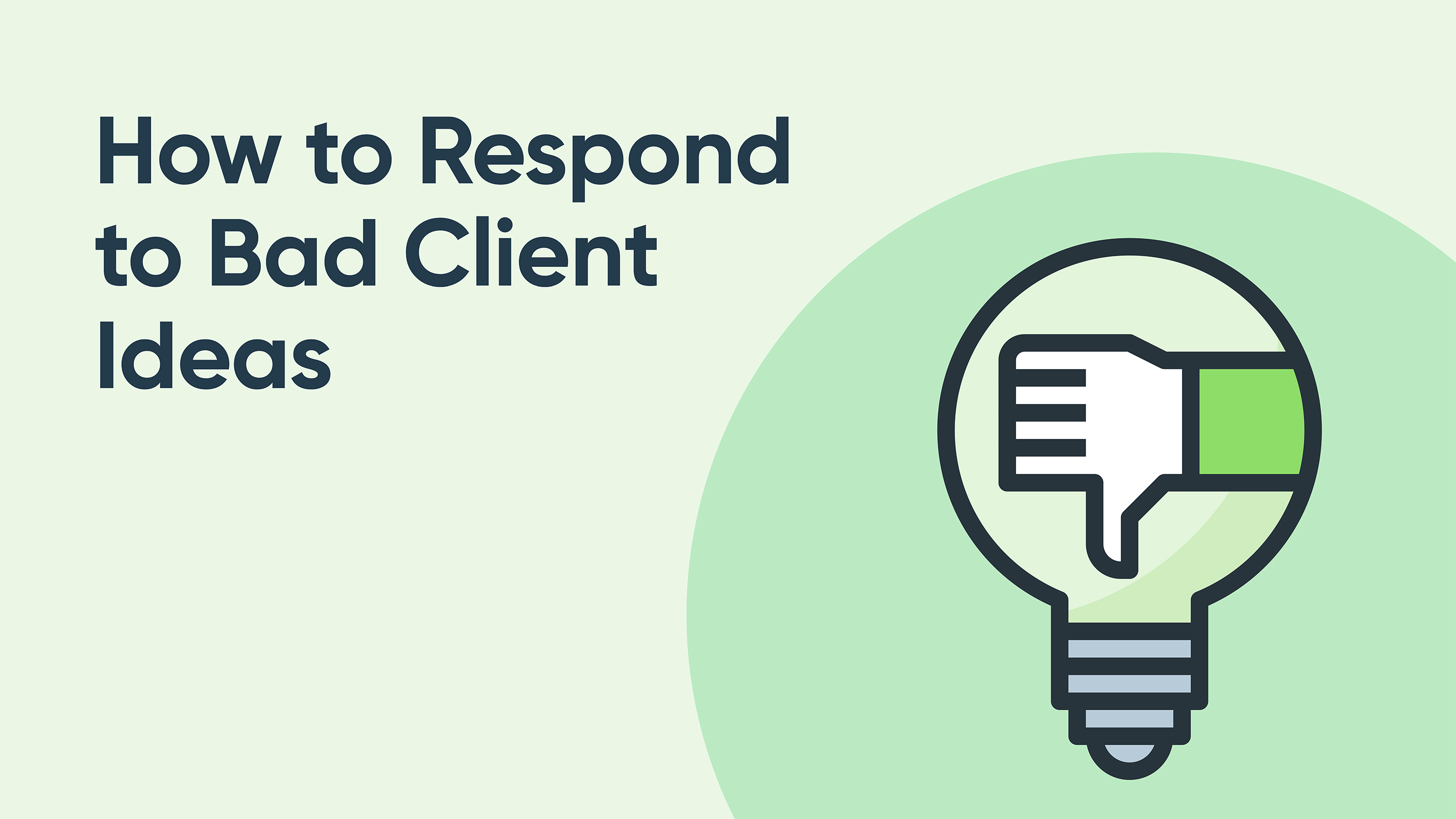
Your client’s ideas are critical to every web design project. They guide the creation of moodboards (and the typography and color palette selections that follow). They inform the details of the design, like menu bar orientation, pop-up timing, banner style, and slider locations. And they influence final approvals.
But, the truth is, not all ideas and feedback are good. Sometimes, clients have really terrible suggestions for how their website should look and work.
This puts you in a bind, as you have to keep your clients happy to keep their business - but there’s an inherent risk in saying both “yes” and “no” to those requests. In saying yes, you can damage your reputation, especially if their idea turns out as poorly as you suspect it will. But in saying no, you risk offending your client and losing their business to a web design agency that is willing to work with their ideas.
So, how do you respond when you’re faced with bad client ideas and feedback? We’ve got a few suggestions. Here’s a 5 step guide to giving the dreaded (but safer) “no” answer.
It’s natural to have a negative reaction when you read an email, site change request, or client questionnaire with shockingly bad ideas. But you need to resist the urge to respond right away.
There are two reasons why. First, you need to make sure you’re in the right frame of mind to reply. If you’re too passionate about voicing your opinion, you may come across as harsh or arrogant - which can leave your clients feeling frustrated.
At the same time, you need to make sure you understand exactly what the client is asking for. Otherwise, you run the risk of shooting down an idea that isn’t as terrible as you thought or arguing against it for the wrong reasons.
Reviewing your client’s request multiple times solves both issues by giving you time to absorb the idea and develop a fair assessment of it. And since clear understanding more often leads to a sound response, this increases the likelihood of a good outcome.
Granted, there will be times when even the most rigorous re-reading of the client’s feedback will leave you confused. But, you can easily fix that by asking clarifying questions.
For example, if your client requests clashing colors or jarring fonts, you might ask questions like:
By asking these types of questions and giving your clients a chance to explain their vision in detail, you open the door to discussion and minimize the likelihood of misunderstanding.
If, after you’ve poured over the request and chatted with your client, you still think the idea would do more harm than good, it’s time to tell them.
Here, you should take some time to form a clear, logical argument that highlights why their idea or feedback isn’t the best option. And you should gather evidence - like previous project results, industry best practices, and newly reported statistics - that support your argument. (Otherwise, you can reach a “difference of opinion” impasse pretty quickly in the discussion.)
Since the goal isn’t to steamroll over their idea and make them feel bad, it’s also important to make sure your reply is tactful. Ultimately, the goal is to redirect them toward alternatives that will be better for their website and business in the long run (and for yours as well).
One of the best ways you can give a tactful “no” is by offering alternatives to your clients that can help them achieve their vision. This might involve designing a few different mockup options for a web page or brainstorming a variety of different solutions for a lead generation form.
However, by offering these alternatives, you can more effectively persuade your clients to let go of an idea that isn’t great for business.
Unfortunately, clients are stubborn sometimes. And no matter how much evidence you provide or experience you have, they’ll doggedly persist in their idea.
In this case, it’s best to just let it go. The chips will fall where they may and you can rest easy knowing that you voiced your opinion (and the outcome is on the client).
While no one wants to deal with bad client ideas, we all face them from time to time. Luckily, you can respond to them successfully by carefully reviewing their suggestions, clarifying details you don’t understand, disagreeing respectfully, and offering alternative options to bring their vision to life.